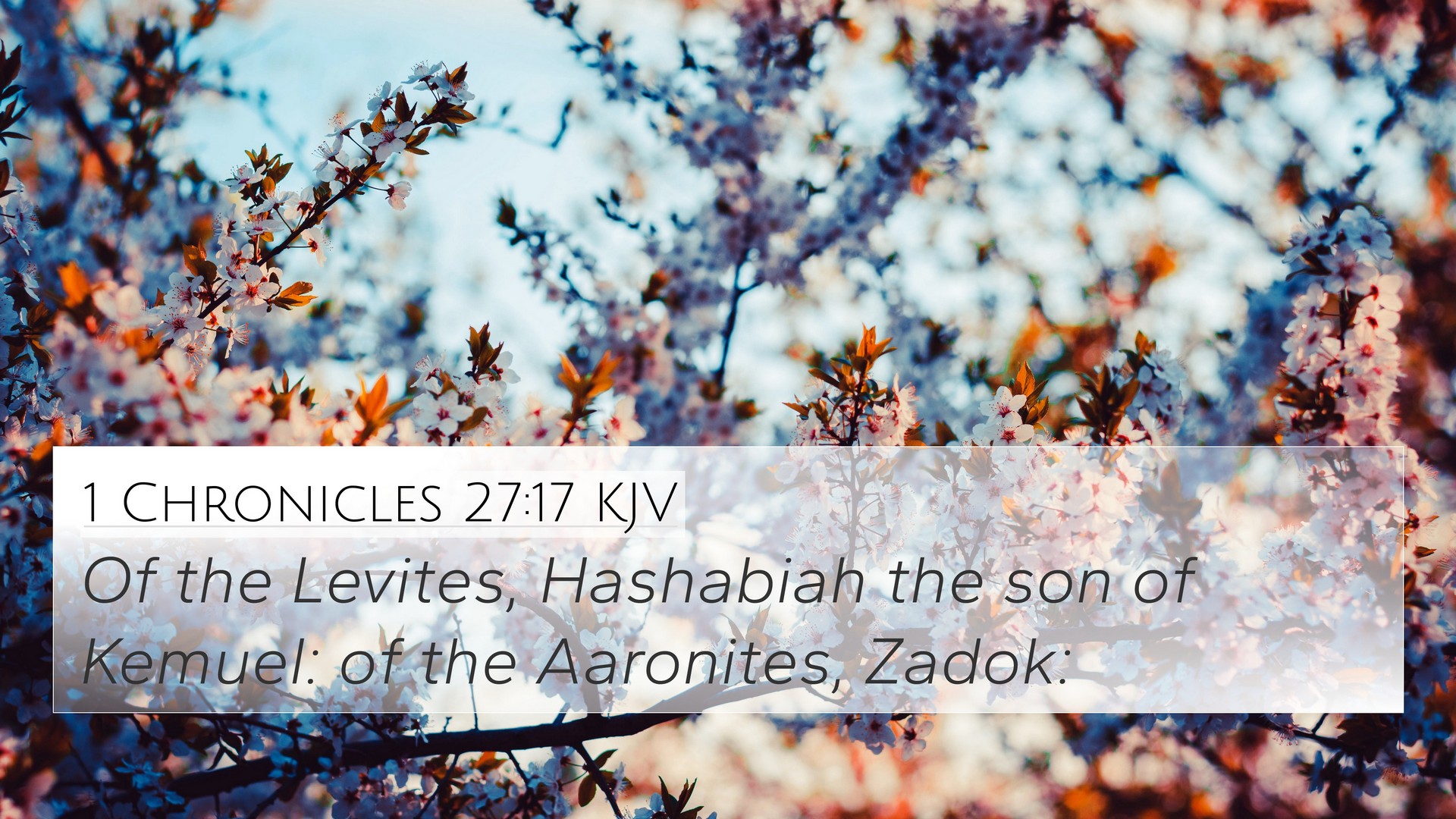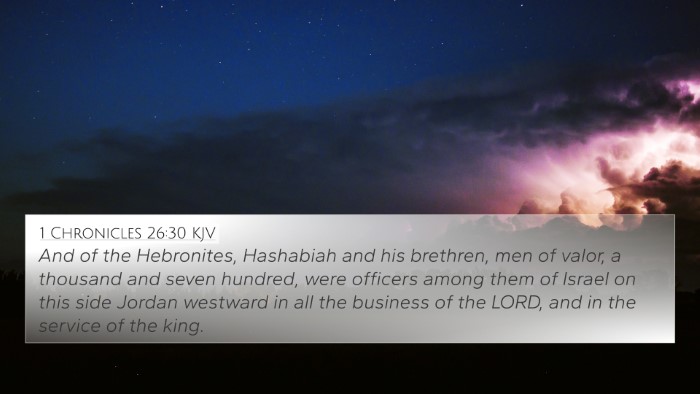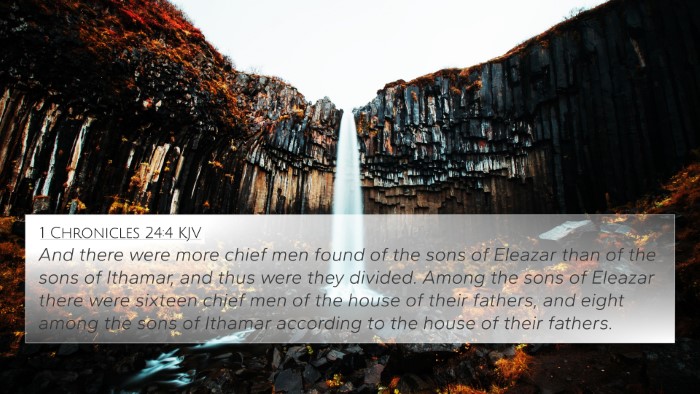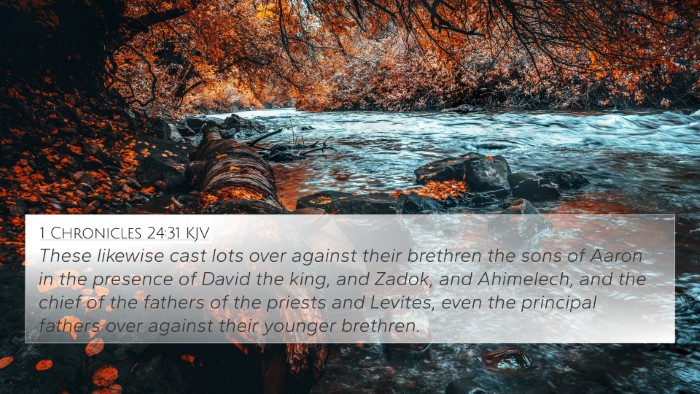Understanding 1 Chronicles 27:17
Verse: 1 Chronicles 27:17 - "Of the Levites, Hashabiah the son of Kemuel: of the Levites, and Abijah the son of Ahitub was ruler of the house of God."
This verse introduces key figures in the administration of King David's government, specifically focusing on important roles within the Levitical priesthood. The mention of Hashabiah and Abijah emphasizes the organization and structure of service in the temple.
Summary of Insights
This verse has been interpreted in various ways through the analysis of public domain commentaries. Here are some combined insights:
- Matthew Henry's Commentary: Highlights the importance of established leaders within the Levitical order. It emphasizes that the maintenance of the temple and worship services required careful organization and the appointment of capable leaders.
- Albert Barnes' Notes: Discusses the significant backgrounds of Hashabiah and Abijah as representatives of their families, indicating the importance of familial ties within the Levites and their roles in the worship of God. This underscores the continuity of worship practices through designated leaders.
- Adam Clarke's Commentary: Points out that the listing of these leaders reflects David's effort to ensure that every aspect of religious life was adequately supported. The verse signifies the reverence and respect for God within the civic framework of Israel.
Related Cross-References
This verse has connections to several other biblical verses that enhance its meaning and application:
- Exodus 28:1 - God's command for the Levitical priesthood and their duties.
- 1 Chronicles 24:4 - The division of the Levites and the assignment of duties.
- 2 Chronicles 35:3 - The priests' roles in the temple service during the reign of Josiah.
- Hebrews 7:11-12 - Discussion on the priesthood of Levi and its significance in the New Covenant.
- Deuteronomy 18:1 - The inheritance and duties of the Levites as servants of God.
- Nehemiah 12:44 - Appointing leaders for the Levites in the post-exilic period.
- Luke 10:7 - The priestly responsibilities reflective of service in the New Testament.
Thematic Connections
Examining 1 Chronicles 27:17 in context reveals broader themes within the scripture:
- Leadership in Worship: The roles outlined emphasize the need for capable leadership in spiritual matters, a recurring theme throughout the Bible.
- Continuity of Worship: The appointment of leaders reflects the importance of tradition and continuity in worship practices.
- Organization of the Church: Similarities can be observed in the New Testament regarding the establishment of church leadership (e.g., Acts 6:1-6).
Application in Bible Study
Understanding 1 Chronicles 27:17 provides valuable insights for anyone engaged in bible verse cross-referencing or thematic Bible verse connections. Here are some helpful methods for engaging with this verse:
- Utilize a bible concordance to find related passages and deepen contextual understanding.
- Engage in cross-reference Bible study to explore how leadership and worship are interconnected across the scriptures.
- Explore the historical context of the Levites through a bible cross-reference guide to appreciate their role in Israel's history.
- Identify connections between Bible verses that illuminate the significance of Levites in both Old and New Testaments.
Conclusion
1 Chronicles 27:17 invites readers to reflect on the importance of established leadership in worship, the continuity of God’s service across generations, and the valuable lessons it brings to modern faith practices. By studying this verse in light of other scriptures, one can gain a deeper appreciation for the organization of God’s people and the reverence required in worship. The connections drawn between this verse and others enhance our understanding of the role of leadership in spiritual communities and the collaborative effort in serving God faithfully.
Final Thoughts
As one explores the bible cross-reference system, remember that each verse contributes to the grand narrative of scripture. Engage thoughtfully with the texts and draw parallels that resonate with your faith journey.






